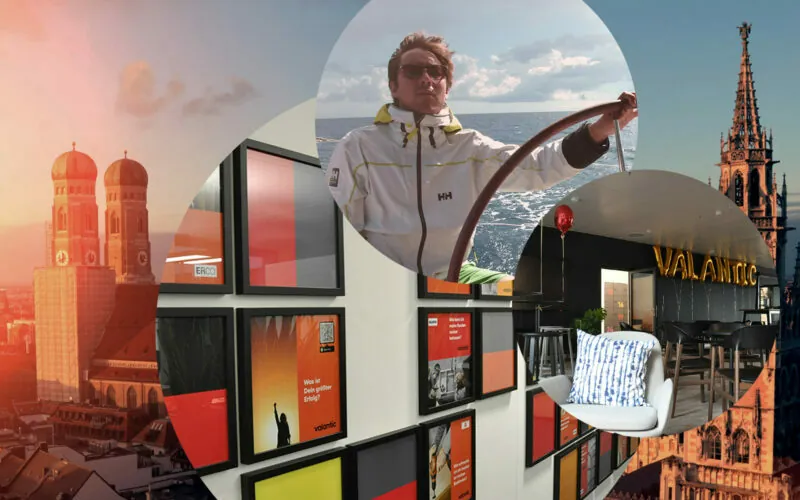Project Insights – A Customer Case in the Pharma Industry as Personal Success Story
July 14, 2020

July 14, 2020

Hello Claudius, you’re Senior Consultant in the Integrated Business Planning sector. Can you tell us what you actually do?
My name is Claudius, I grew up on the Ammersee, studied business informatics, and am currently living in Munich because I love it there. In my free time, I can usually be found skiing or hiking or on a sailboat.
I’ve worked at valantic for more than 3.5 years in the Integrated Business Planning area. As Senior Consultant, I assist our customers with the development of an intelligent, long-term planning process that has to strike a balance between stable processes, clear organization, and integrated IT architecture. We always start in the strategic area, work tactically to derive the SIOP (Sales, Inventory, and Operations Planning) process, and finish up with the operative exercise on the shop floor. And we do this custom-tailored for each customer’s industry.
What does one of your projects actually look like? What kinds of questions does the customer have for you?
In my best project, the customer (an international pharma company) was combating above-average high inventories and late customer deliveries. This is a classic problem that arises because there is no integrated planning approach. My colleagues and I were able to determine relatively quickly that there was a lack of standardized processes, clearly defined responsibilities, and clean IT structures with the required master data.
After the causes were clear, the procedure was determined, the project team composed, and the kick-off prepared. Simply put, we decided to define an extensive goal planning process (tactical to operative), to implement it piece by piece, and in parallel to this, create the necessary prerequisites (adjustment of organization, creation of new master data, integration of additional departments/plants, etc.).
The challenges for our project team were first and foremost in the production processes, which are very complex in the process industry of which this project is a part. Another point was the huge amount of new master data that was required in the system and that had to be created, tested, and standardized in the whole plant.
That sounds really fascinating. Can you tell us a bit more about the project? How large is the project team and precisely what is your role on it?
The project team consisted of twenty project members on the customer side and five valantic consultants. There was a project manager for each of the four subprojects and a project manager who presented and was responsible for the results and necessary decisions for steering. Since the project members came from different valantic departments, some personal exchange such as an after-work beer or two is all but a requirement. Having our own facilities at the customer’s site and clear regular communication within the valantic team also made coordination efficient and easy.
I took on the “Master data and SAP requirements” subproject and was responsible for the implementation of the goal planning process with the project manager. The biggest challenge at the beginning of the project was to do the persuasive work so that our project team had the necessary power and support to initiate wide-ranging changes and actually make these. For many outsiders, the goal planning process was too far from everyday planning and some people simply could not conceive of some of the innovations at their own company.
What was your personal challenge on this project?
My personal challenge was the clear, structured communication within the customer organization. Here, I frequently had to follow up actively so that the right facts were communicated to the right people at the right time.
What are you especially proud of?
In the end, it was a very exciting project with many different aspects. I’m proud that the customer still asks us for advice today when interface questions arise and that we have a very open, personal relationship to the employees on-site. I can truly say that I have grown into my role and that today, I am more a process industry expert than anything else. Finally, the project was a lot of fun and I am pleased that we designed many of the processes, roles, and system settings at the company.
Don't miss a thing.
Subscribe to our latest blog articles.